The best climbing bikes are low-weight, helping you conquer the longest (or steepest) ascents.
There's a definite buzz to riding a fast, flyweight machine, and many road cyclists love the fast acceleration and responsiveness of climbing bikes.
A modern lightweight bike has to prove itself not solely through whether it's under the UCI weight limit, but also by having the aerodynamics to up your ride speed on descents and the flat.
Keep reading to see our pick of the best climbing bikes and to find out more about these lightweight bikes, check out our buyer's guide at the end of this article.
Best climbing bikes 2024, as rated by our expert testers
Giant TCR Advanced SL 0 Dura-Ace Di2
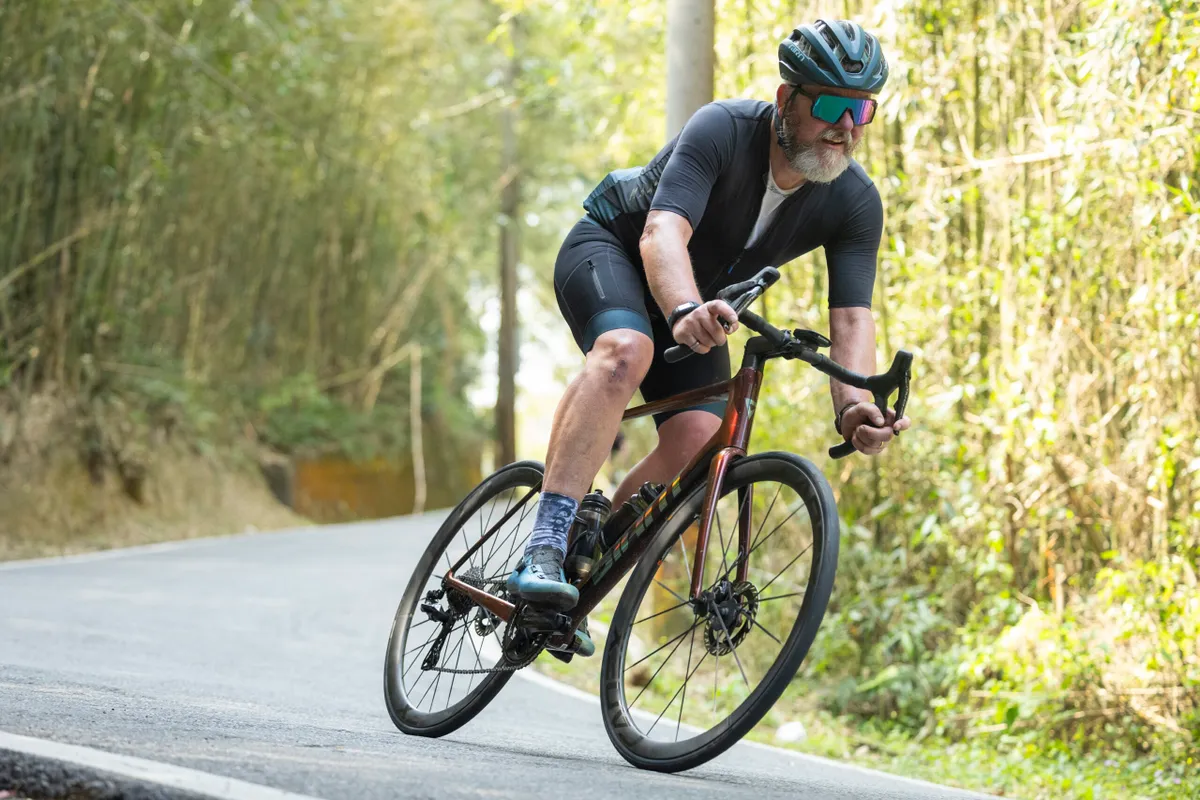
- £11,999 / $12,500 / AU$13,499 as tested
- Weight: 6.4kg (L)
- Pros: Light, stiff and responsive race bike; flawless spec
- Cons: Integrated seat post; top-spec build is pricey
The Giant TCR has long been a benchmark for race bikes and the tenth generation of the bike remains a top performer.
Although the latest version is lighter, potentially smoother and more aerodynamic, it's probably not worth upgrading from the previous generation. Unless money is no object.
While the TCR comes in many tiers to suit different budgets, the Advanced SL 0 model we reviewed is unashamedly premium. Its frameset sports an integrated seatpost rather than a conventional one, which won't appeal to everyone.
With a full Shimano Dura-Ace Di2 groupset and carbon wheels from Giant's in-house brand Cadex, it's ready to race out of the box and is properly light.
BMC Teammachine R 01 LTD

- £14,999 / $14,999 / €14,999 as tested
- Weight: 7.25kg (56cm)
- Pros: Ride feels stiff and efficient; narrow, aero one-piece cockpit; superb spec
- Cons: Tyres aren't very robust; previous generation SRAM Red groupset
The BMC Teammachine R 01 LTD is optimised for all-out speed and it excels when you push the pace on the flat, and up and down climbs.
The aggressive ride position, narrow handlebar (only available in a 36cm width) and minimal compliance aid this goal.
This won’t be right for everyone and nor will the £15,000 / $15,000 asking price.
But BMC isn’t trying to compromise with the Teammachine R 01 LTD. It’s hard to fault this specialist speedster and it succeeds at what it’s designed to do.
When spending this much though, free bar and seatpost swaps would be welcome, as would more durable tyres.
Cannondale SuperSix Evo Hi-Mod 2
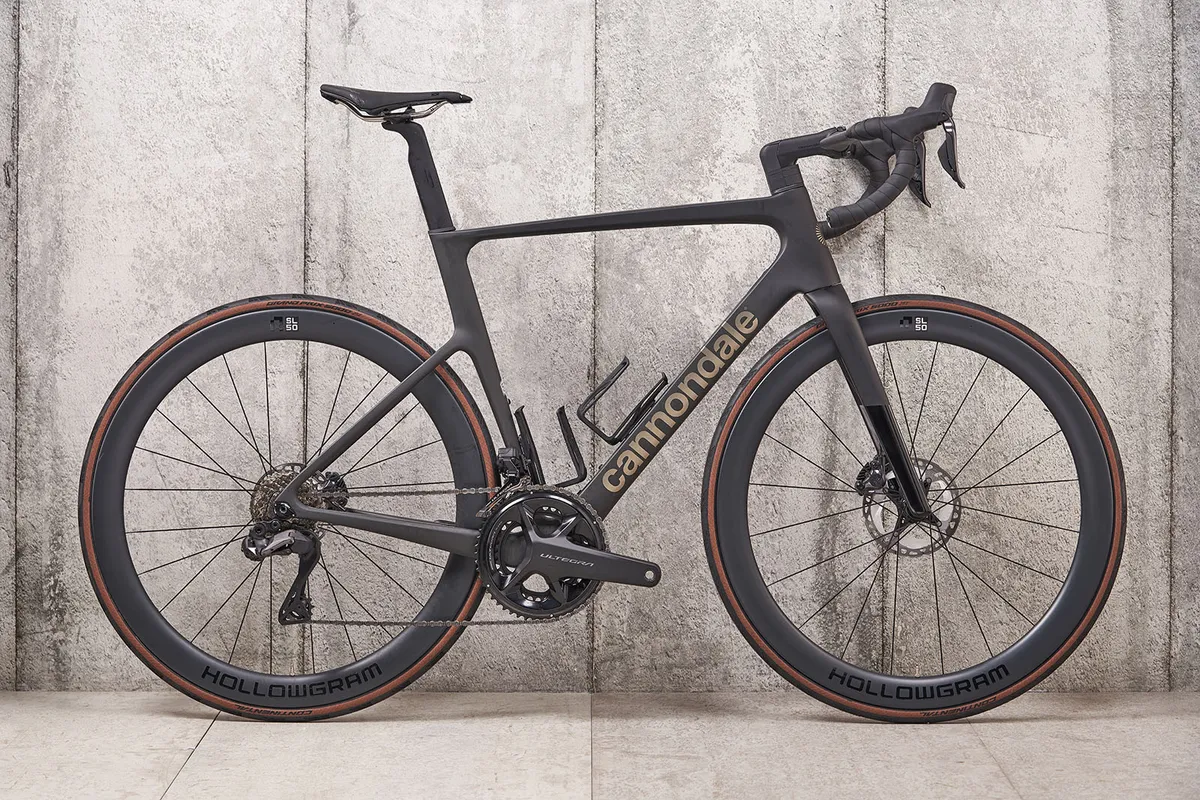
- £8,250 / $8,300 / €8,999 / AU$11,999 as tested
- Weight: 7.57kg (56cm)
- Pros: Excellent handling combined with compliance and stiffness
- Cons: Vision Trimax handlebar may not suit those with smaller hands
Now in its fourth generation, the Cannondale SuperSix Evo continues to cement itself as one of the best climbing bikes.
The new bike takes much of what made the previous versions so well regarded, but removes the often-maligned PF30a press-fit bottom bracket and replaces it with a 68mm BSA threaded model. The front-end design and down tube have also been refined and there's a new proprietary seatpost, too.
Out on the road, the SuperSix Evo balances its inspired handling with compliance and stiffness. It's a particularly adept climber, feeling assured and firm when under the rider and when you want to put the power down, it rockets forward. The new aero seatpost isn't as stiff as you might expect, offering a good amount of buzz-reducing compliance.
The Shimano Ultegra R8100 groupset on this build is BikeRadar's pick of the Japanese brand's latest groupsets and we were impressed by the newly updated flagship HollowGram R-SL 50 wheels, too.
Although Cannondale specs Continental Grand Prix 5000 tyres, they're in a 25mm width and we'd be keen to run wider rubber. We also suspect the Vision Trimax won't suit those with smaller hands because the tops are very deep.
Cannondale SuperSix Evo Lab71 EF Replica

- £12,500 / $14,000 / €14,499 as tested
- Weight: 7.27kg (56cm)
- Pros: Wonderful handling; balance of stiffness and compliance; lightweight frame; top-notch spec
- Cons: Computer mount and finishing kit changes cost extra
The Cannondale SuperSix Evo Lab71 is ridden at the highest level by EF Pro Cycling. You can own this exceptional climbing bike if you have 12,500 / $14,000 to spare.
Blending poised handling with a frame that's stiff but not overly so, the SuperSix Evo Lab71 EF Replica feels as fast as any on the flat.
Uphill, our tester thought there's little between the SuperSix Evo Lab71 EF Replica and specialist climbing bikes.
You're unlikely to want to upgrade the stellar spec. But it's a shame to have to shell out more for your preferred handlebar size and seatpost.
Cannondale SuperSix Evo 3

- £4,000 / $4,500 / €4,499 / AU$6,999 as tested
- Weight: 8.42kg (56cm)
- Pros: Still light but more aero; fine handling; better value than glitzier SuperSix models
- Cons: Skinny tyres
The Cannondale SuperSix Evo 3 proves the best climbing bikes can keep weights and prices relatively low.
At half the price of its top-end SuperSix brethren, the Evo 3 weighs slightly more but features the same aero profile and nimble handling.
The result is a mid-range bike that feels fast anywhere you ride it. However, you'll probably want to upgrade the wheels and increase the tyre width from the 25mm stock size.
Canyon Ultimate CF SLX 8 Di2

- £6,199 / $5,499 / €6,499 / AU$9,899 as tested
- Weight: 7.26kg (L)
- Pros: Cheaper than Ultimate CFR; smoother than Ultimate CFR
- Cons: Can’t customise components at purchase
The Canyon Ultimate CF SLX 8 Di2 sits below the range-topping CFR, but our tester found it to be smoother with the same handling and stiffness as the pricier model.
In short, you get better value for money with this Shimano Ultegra-equipped bike and a more balanced ride, earning it a place on the very top shelf of current road bikes.
It’s a shame you can’t customise the build at the point of purchase, which might be an annoyance if you prefer an inline seatpost.
ENVE Melee (Ultegra Di2 build)

- £5,500 / $5,500 / €5,500 for frame 'chassis' | £10,400 / $12,834 / AU$19,220 as tested
- Weight: 7.8kg (58cm in this example build)
- Pros: Outstanding handling balanced with great comfort and geometry
- Cons: Expensive and you can't buy a full build off the peg
The ENVE Melee took our 2023 Performance Bike of the Year crown, thanks to its outstanding handling and balanced comfort.
The brand's second bike after the Custom Road has been aerodynamically optimised, albeit with a slightly taller ride position than you'll find on longer and lower bikes. The Melee also fully integrates its cables and hoses and uses a D-shaped seatpost.
We found the Melee to be one of the easiest-handling race bikes on the market and we were struck by how stable and composed it is in every scenario. It deals with everything with real calmness.
A stable and composed ride can sometimes be a little boring, but there's none of that here. The Melee's reaction to inputs is quick and it's unperturbed by crosswinds.
Unlike the other bikes on this list, the Melee is sold as a 'chassis' – a frame, fork, stem, handlebar, seatpost and thru-axles. You then build the bike up with your preferred electronic groupset, wheels and tyres. Even in a modest build, that means the Melee is far from a cheap proposition, but the ability to mould it into your own makes it a real winner.
Our example build came with a Shimano Ultegra R8100 groupset, and ENVE's Foundation 45 carbon wheels and SES tyres in a 29mm width. We've also reviewed the pro-level Dura-Ace Di2 spec.
Focus Izalco Max 9.8

- £6,599 / €6,799 / AU$10,499 as tested
- Weight: 7.9kg (56cm)
- Pros: Aesthetic design considers speed and practicality; brilliant handling; good value spec
- Cons: Not the most exciting
The Focus Izalco Max 9.8 is a fantastically versatile climbing bike that won our 2024 Race Bike of the Year crown.
Its frameset delivers low weight and aerodynamic efficiency, but Focus hasn't forsaken crucial adjustability.
Our only gripe regarding the impressively competitive spec was the omission of a power meter.
The Izalco Max does most things well, but nothing exceptionally. Whether this is a sign of sensible competence or dull conservatism is up to you.
Lapierre Xelius SL 9.0
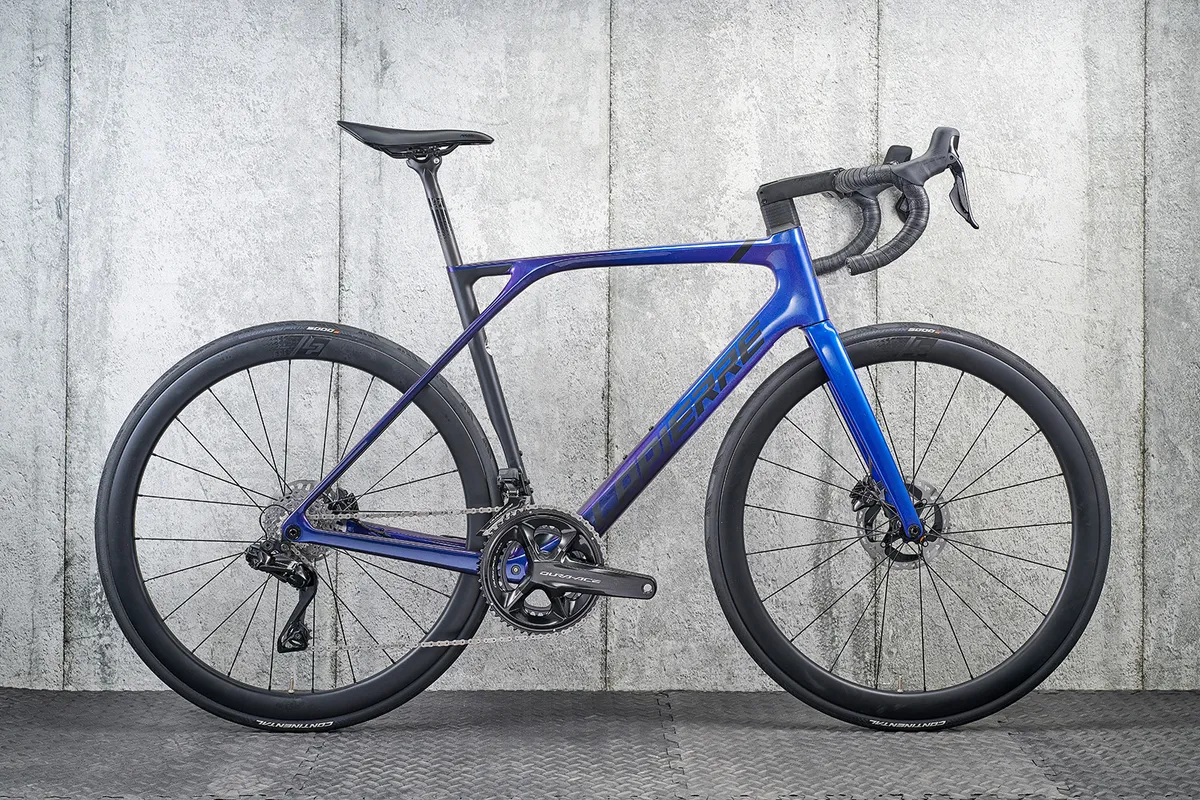
- £7,399 / €7,799 as tested
- Weight: 7.5kg (L)
- Pros: Good-value spec; racy geometry
- Cons: Limited sizing; can be twitchy in the wind
Another lightweight bike with aero features, the Xelius nevertheless stands out thanks to the design of its seatstays. The navy blue fade glitter paintjob looks stunning and the racy geometry leads to sharp handling.
If you're at either extreme of the size range, the five sizes available may not work for you though.
The spec is really good for the price, with 12-speed Dura-Ace Di2, a carbon bar and stem and Lapierre's own-brand carbon wheels with 25mm Continental GP5000 tyres that measure 27mm on the 47mm-deep, 21mm internal-width rims.
Merida Scultura Team
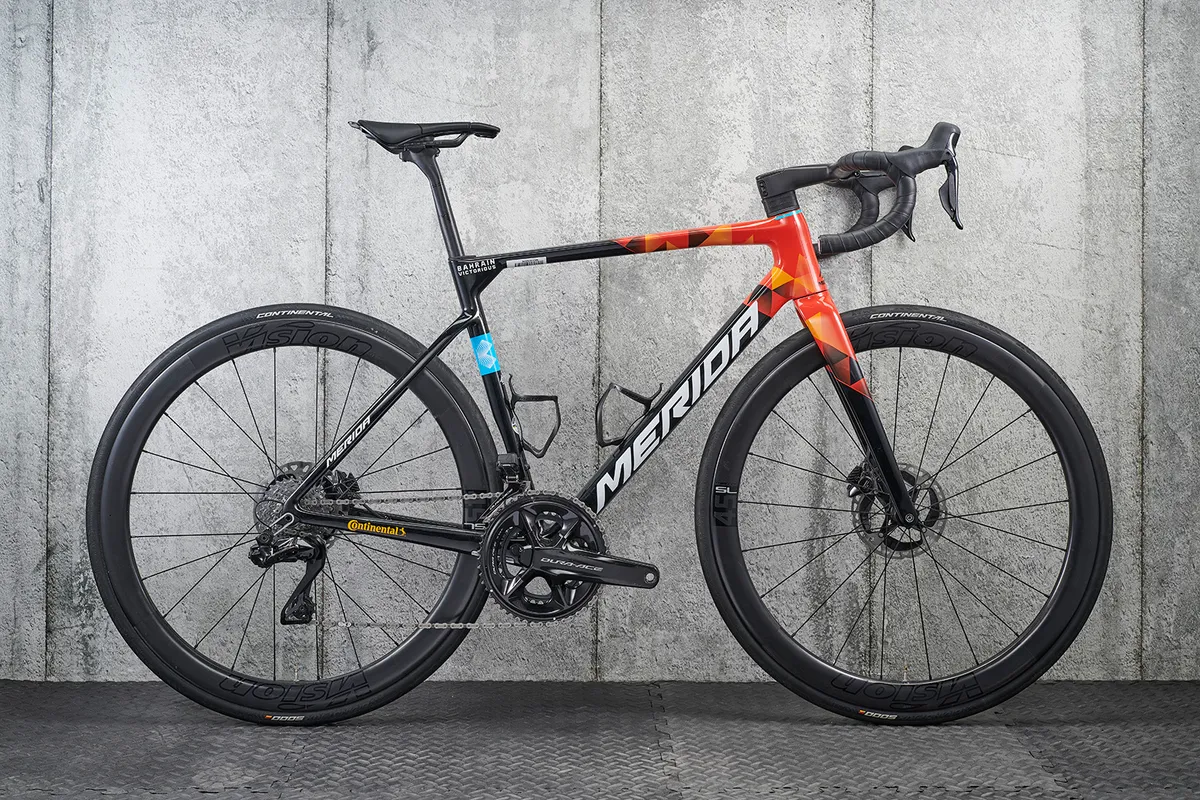
- £8,000 / €9,999 as tested
- Weight: 7.1kg (M)
- Pros: Great value for a pro-level spec; exciting ride
- Cons: Tricky fit adjustment
The Merida Scultura Team took our 2022 Performance Bike of the Year crown, thanks to its superb, exciting ride and racy handling. It's also great value, with a Shimano Dura-Ace 12-speed groupset, complete with power meter.
Merida has shaved 4.2 per cent from the previous Scultura's drag numbers, while also lowering weight slightly to a claimed 822g for a size M frame.
It's well kitted out; we particularly liked the Vision Metron 45 SL wheels, their 1,372g weight leading to low inertia on climbs. They're shod with 28mm Continental GP5000 tyres for a comfortable ride.
The one downside is the lack of narrower options for the integrated bar/stem.
Specialized S-Works Tarmac SL8 Dura-Ace Di2
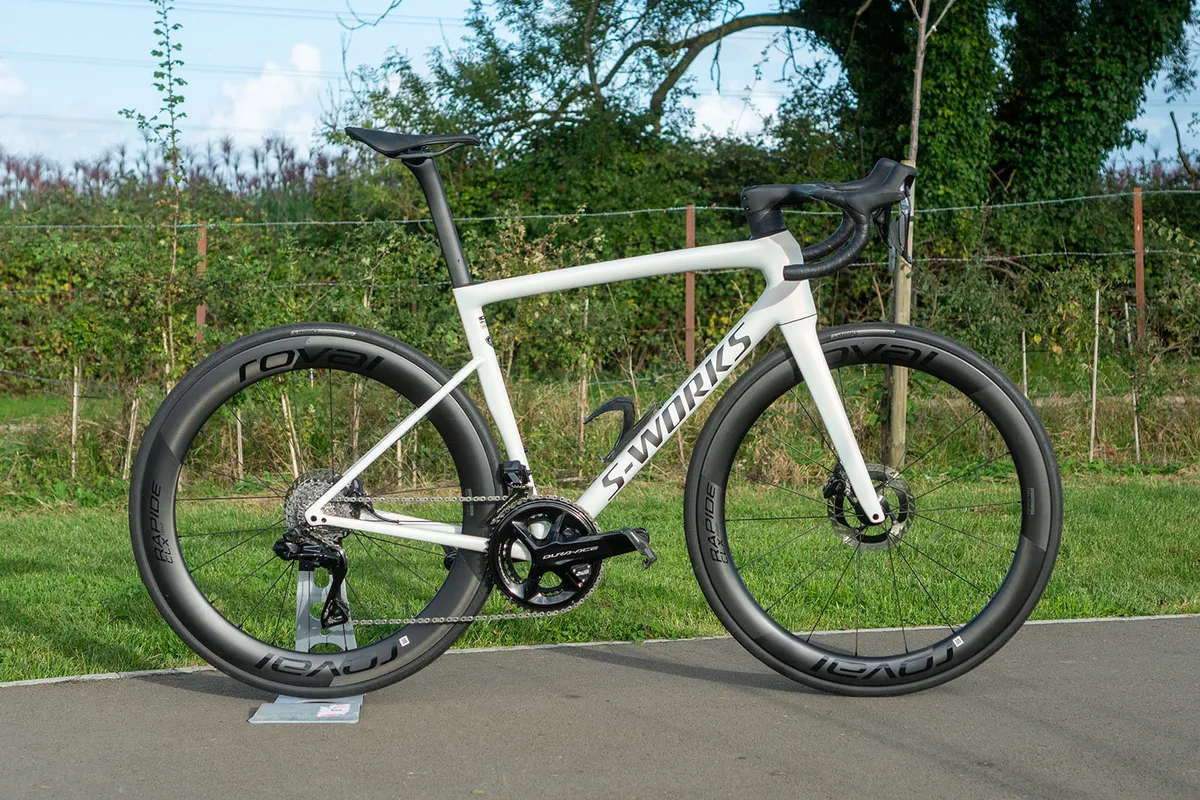
- £12,000 / $14,000 / €14,000 / AU$19,900 as tested
- Weight: 6.76kg (56cm)
- Pros: Exceptionally well-balanced handling; aero bike speed
- Cons: Wider tyres would be beneficial; cost
The Specialized S-Works Tarmac SL8 is the brand’s latest flagship road bike.
The SL8 rides like a dream with exceptionally well-balanced handling. It has the speed of an aero bike and it’s a fantastic climber.
Our tester described this no-expense-spared build, featuring Shimano Dura-Ace, as one of the finest race bikes available. But he cautioned that it doesn’t shift the goalposts far enough from the performance of the previous-generation SL7 to warrant upgrading.
Basso Diamante Ultegra Di2
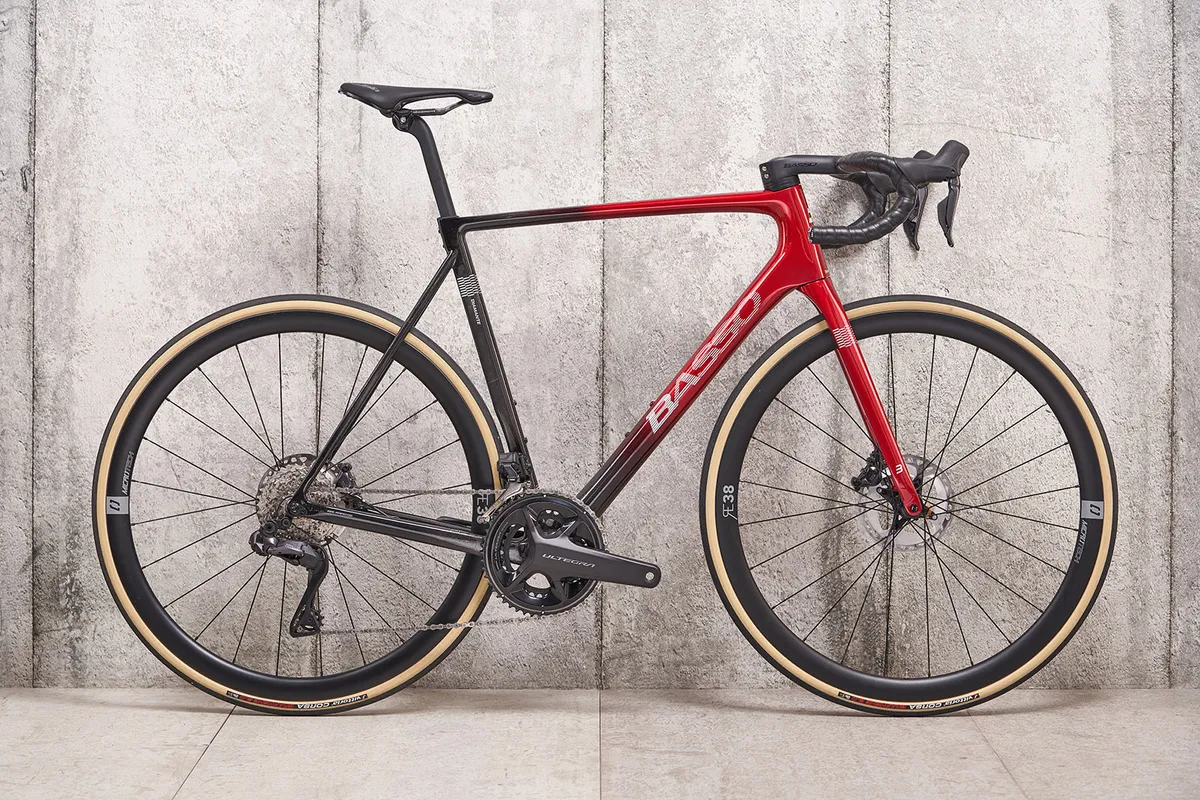
- £7,199 / €8,299 as tested
- Weight: 7.58kg (58cm)
- Pros: Sharp but stable race geometry
- Cons: Long and low cockpit won't work for everyone
The eighth-generation Bsso Diamante is a thoroughbred race bike, while remaining classic in its appearance. The tube shapes are rounded, which Basso says is designed to improve stiffness and efficiency, while minimising weight.
The geometry is in pure race bike territory – long and low, so you'll want to have a long think about whether it will work for you and carefully study the geometry chart.
That said, in testing we found the Diamante to balance its tactile handling with satisfying stiffness. It's surprisingly comfortable, too, thanks to the slim seatstays and carbon seatpost.
There's little to criticise with the Ultegra Di2 specced. The second-tier groupset delivers identical shifting and braking performance to Dura-Ace with a compelling cost saving. We also rated the Microtech RE38 wheels – many own-brand efforts can vary in design modernity, but these are on the money with a 23mm internal rim width.
Bianchi Specialissima RC

- £10,999 / $13,899 / €12,749 as tested
- Weight: 6.75kg (55cm)
- Pros: Speedy everywhere; comfy; balanced handling
- Cons: Idiosyncratic looks; inappropriate tyres; deeper wheels would be beneficial
The Bianchi Specialissima RC is an all-round race bike that goes like a rocket on all terrain. In the frame, the Italian brand has meshed low weight and aerodynamics to brilliant effect.
Although the Specialissima RC's geometry is pretty racy, its handling doesn't feel skittish. High frame stiffness contributes to a sensation of efficiency as you climb, but there's plenty of compliance too.
The Specialissima RC won't be the apple of everyone's eye while more resilient tyres and deeper rims might be better for most people's riding.
Canyon Ultimate CFR Di2

- £10,399 as tested
- Weight: 6.3kg (L)
- Pros: More versatile than ever
- Cons: Inconsistent spec
The Canyon Ultimate CFR Di2 is tremendously expensive and light at a mere 6.3kg in size large.
The top-dog Ultimate retains its race-winning stiffness, agility and climbing ability while becoming ever more aerodynamic.
However, the shallow-section DT Swiss wheels undermine the Ultimate's versatility, while the Schwalbe Pro One TT tyres are a puncture risk on all but the smoothest roads.
Colnago C68
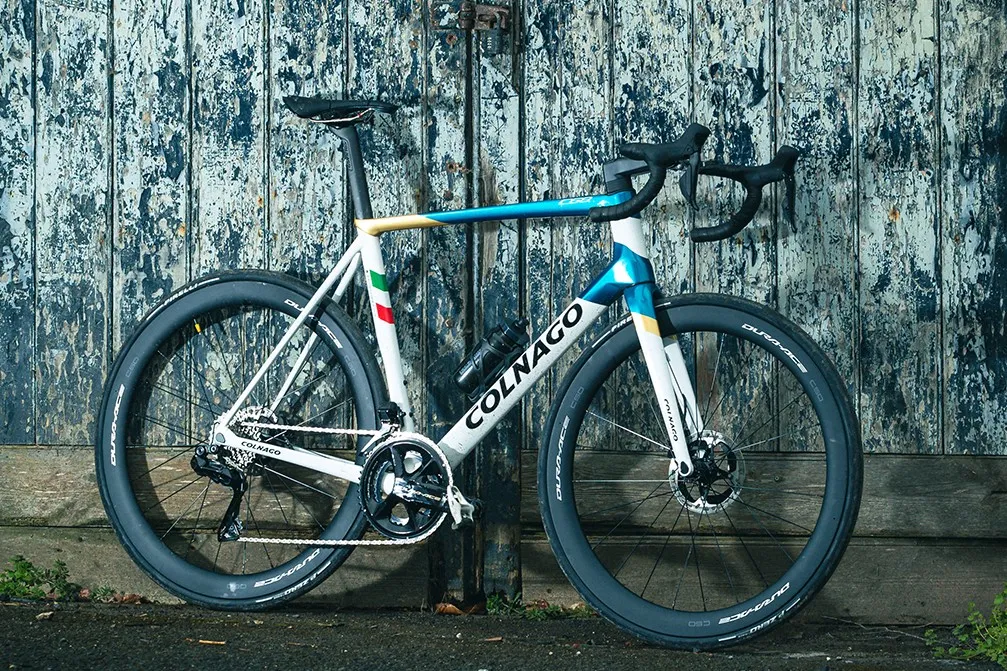
- £11,753 / $15,772 / €14,065 as tested
- Weight: 7.3kg (58cm equivalent)
- Pros: Beautifully built; superb handling
- Cons: Saddle should be better at this price
Colnago uses its lugged construction on the C68, but the tube shapes are more reminiscent of the monocoque V3R. Colnago fits its own comfortable one-piece cockpit with hidden cable routing.
The ride position is long and low, although not too aggressive for less flexible riders and leads to great handling from the taut frame.
There's a full Dura-Ace R9200 build, including C50 wheels with 28mm Pirelli tyres, although the Prologo saddle isn't the range-topping carbon-railed version. It's a great bike that merits its superbike rating.
Colnago V4RS

- £5,000 / €12,630 as tested (UK price is for frameset only)
- Weight: 7.23kg (57cm)
- Pros: Pinpoint handling
- Cons: Seriously expensive
Ridden by UAE Team Emirates (and perhaps most importantly) Tadej Pogačar, the V4RS is Colnago's monocoque carbon race bike, where a balance of lightness, stiffness and speed is the name of the game.
Colnago claims the V4RS is 3 per cent more aerodynamic than the outgoing V3RS and the new CC01 cockpit alone is said to be 16 per cent more aerodynamic. There are some new tube shapes too, with a reprofiled head tube, although many will be glad to hear the brand has reverted back to a round steerer tube.
Out on the road, the V4RS is unerringly poised, with direct handling and sharpness. It felt particularly confident on descents, driving hard into an apex and the bottom bracket laps up power when climbing, the bike keen to accelerate when you get out of the saddle.
Factor O2 VAM

- £11,800 / $11,799 / €11,349 / AU$18,990 as tested
- Weight: 6.63kg (56cm)
- Pros: Low weight; feels efficient; brilliant climbing wheels; good ride quality
- Cons: Very costly; clincher tyres specced; quality problem
The Factor 02 VAM weighs a scant 6.63kg (56cm) thanks to its slimline frame, carbon seat post mast and low-profile Black Inc wheelset.
Predictably, its climbing performance is sensational since the O2 VAM also feels receptive to acceleration on inclines. Handling and compliance are impressive too.
On the flat, the O2 VAM feels competitive with the best climbing bikes, having taken aero inspiration from Factor's aero bike, the Ostro VAM.
The O2 VAM is expensive though. So our tester was disappointed to see clincher tyres on a tubeless wheelset and to experience issues with the bottle cage screws.
Scott Addict RC 10

- £5,949 / $8,000 / €6,599 as tested
- Weight: 7.9kg (56cm)
- Pros: Quality ride; power meter
- Cons: Middling wheels and mediocre tyres
The Scott Addict marries sharp handling with a predictable and compliant ride quality that's similar to the Cervélo R5. There's integrated cabling that works for mechanical and wired electronic, as well as wireless shifting, and it's reasonably easy to work on.
Scott includes a power meter with the SRAM Force AXS electronic groupset and you get decent, if not outstanding, Syncros Capital 1.0 35 Disc wheels with a claimed weight of 1,574g a pair.
We were disappointed with the fitted Schwalbe One TLE tyres though, with their higher rolling resistance than many of the best road bike tyres. Tyre clearance is a little narrow at 28mm too.
Although this mid-spec Addict weighs just under 8kg, you can spend a lot more and get the bike's claimed weight down to 6.7kg.
For less money, you can have the Scott Addict RC 40. This entry-level model uses the same frameset as the RC 10 but cheaper parts.
Specialized Aethos Comp
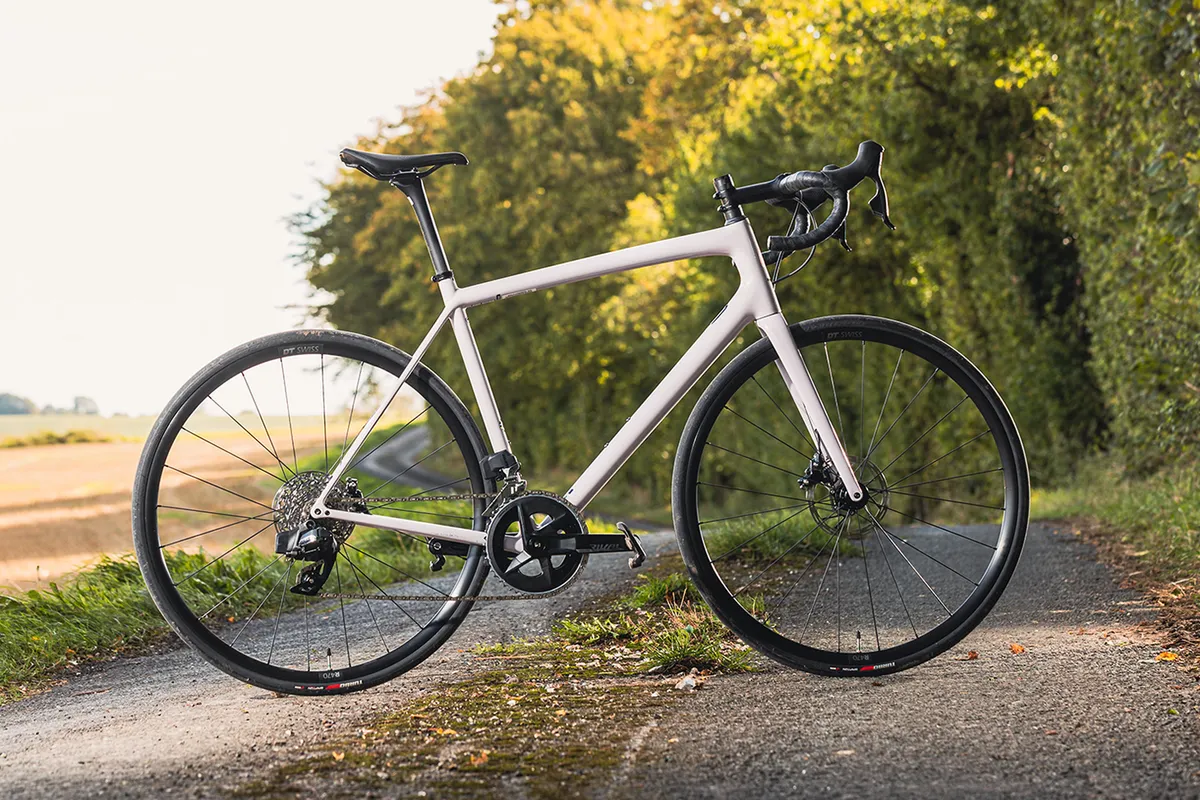
- £4,500 / $5,000 / €5,400 / AU$6,900 as tested
- Weight: 8.2kg (58cm)
- Pros: Rapid handling, but stable ride quality; climbs well
- Cons: Wheelset and tyres limit performance
Although the Comp spec of the Specialized Aethos weighs over 8kg, the top-spec S-Works Aethos brings that down to a claimed sub-6kg, definitely earning a place on our lightweight bikes list. The classic frame profile with round tubes goes against the aero-is-everything modern trend.
The Comp uses a lower-spec carbon than the S-Works, but still has a 700g frame weight and comes with a SRAM Rival AXS groupset and lower-priced, heavier wheels. These make it feel less skittish than the S-Works bike, while it retains its rapid handling and shares its geometry with the Tarmac SL7. It still feels light when climbing too.
Specialized Tarmac SL8 Pro (SRAM Force AXS)

- £8,000 / $8,500 / €8,500 as tested
- Weight: 7.46kg (56cm)
- Pros: Quick; low weight; lively ride; nearly spotless build
- Cons: High cost; brake rotors are cacophonous in the wet
The Specialized Tarmac SL8 Pro matches much of the performance of the S-Works Tarmac at lower cost.
It’s still expensive, but the frameset and spec are brilliant, making the Tarmac SL8 Pro (SRAM Force AXS) a pulsating and rapid ride.
Wider tyres and quieter disc brake rotors would be good. However, if you want an excellent climbing bike that’s fast on the flat too, the Specialized Tarmac SL8 Pro ticks the boxes.
Trek Émonda ALR 5

- £2,325 / $2,300 / €2,325 / AU$3,500 as tested
- Weight: 9kg (56cm)
- Pros: Deft handling; high ride quality; simple to customise; wide size range
- Cons: Sluggish tyres and wheels
Trek has discontinued the carbon Émonda, but its specialist climbing bike lives on in alloy.
The entry-level Émonda ALR 5 is only marginally heavier than the old mid-range carbon model, while delivering a smooth ride and assured handling.
Although the tyres and wheels feel disappointingly slow on a race bike, the rolling stock will be easy to upgrade. As will other components because Trek hasn't saddled the Émonda ALR with too much proprietary tech.
Wilier Verticale SLR Dura-Ace Di2

- £11,000 / $14,500 / €12,200 as tested
- Weight: 6.8kg (XL)
- Pros: Wonderful climbing and descending; free or cheap component changes at purchase
- Cons: Short of straight-line speed; high RRP; power meter not included
The Wilier Verticale SLR Dura-Ace Di2 is the Italian brand's dedicated climbing bike. It ascends as well as you'd imagine for a bike which is almost UCI-illegal, even in size XL.
The geometry and V-Bar handlebar are also optimised for inclines. Handling isn't as fast as some race bikes, but this makes the Verticale SLR a stable descender.
We like how it's free to switch the handlebar to your preferred width and you can swap the seatpost for a small fee.
However, the omission of a power meter on a £11,000 / $14,500 bike is unforgivable.
What we've included (and what we haven't)
This buyer's guide features lightweight bikes at a range of prices, reviewed by BikeRadar and having scored at least four stars in our testing.
While lighter bikes may be available (including custom builds and different models within a given manufacturer's range), these are bikes we have tried and tested, and can confidently vouch for as a result.
Why you can trust BikeRadar
BikeRadar has been an authority on bikes and cycling tech since its inception in 2007, delivering the world’s best riding advice.
We have experts testing all types of bikes, parts, clothing and accessories, from road, mountain and gravel bikes to commuting, bikepacking and electric bikes.
Our reviews are always editorially independent – with no exceptions. Our reviewers comprehensively test all products in the real world, always reflecting on performance, value and the wider market when delivering their verdicts and review ratings.
We have more than 15,000 product reviews available at your fingertips, as well as expert buying, maintenance, training, skills, health and fitness advice.
Our annual Bike of the Year test is an industry benchmark and the BikeRadar team consists of some of the most experienced riders and testers in the business.
Buyer’s guide to climbing bikes
Weight
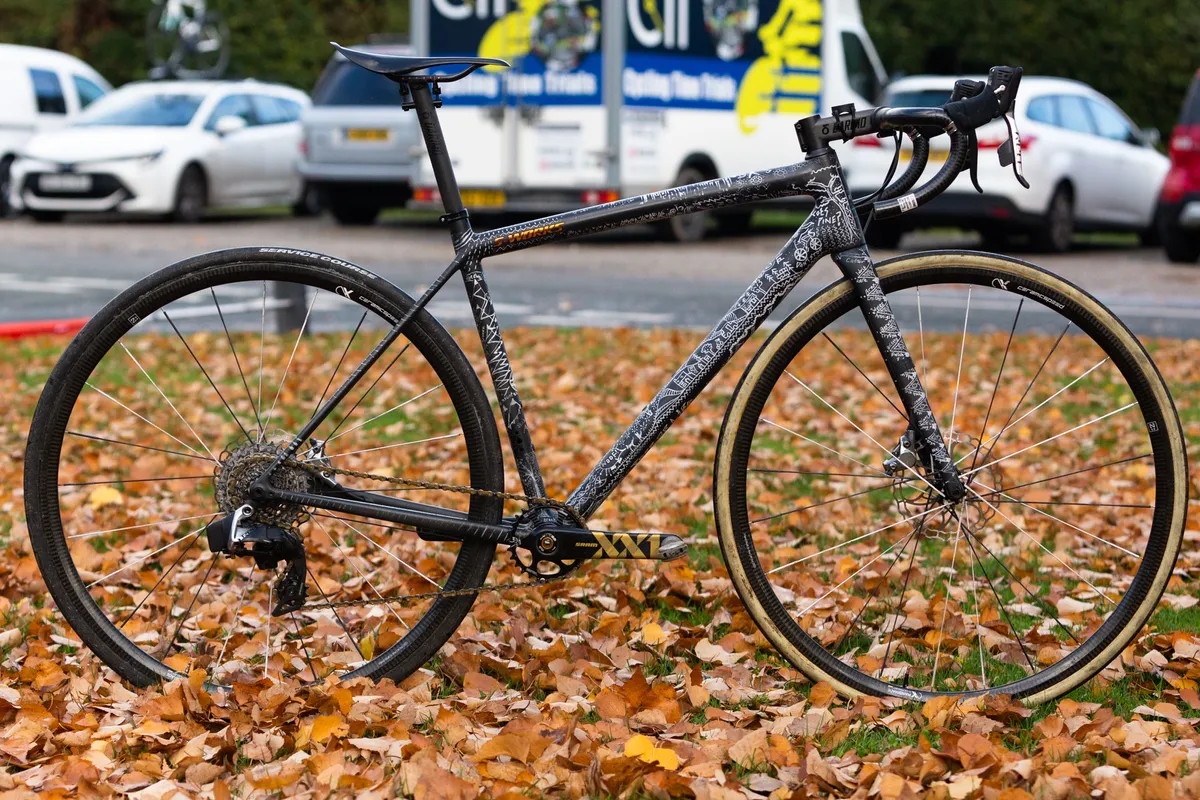
It perhaps goes without saying, but when you’re riding uphill, gravity is always trying to pull you back down.
For this reason, hill climbers will often lose bodyweight before the season and shave grams from their bike and equipment. Some hill-climb obsessives do this literally.
Therefore, if you want to ride uphill faster, or simply make the hills a little easier, a lightweight bike helps a lot.
The only issues are that high-end, lightweight bikes and parts can be eye-wateringly expensive, and the weight-weenie bug can be hard to shake once you get started. However, some of the best road bikes under £3,000 are good for climbing.
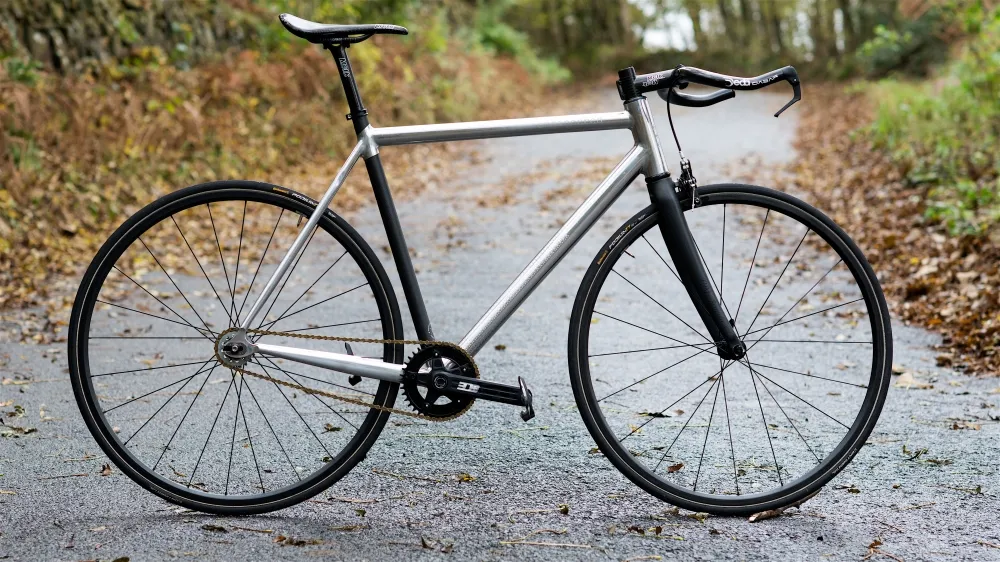
Cheaper still is improving your power-to-weight ratio. You can do this by becoming more powerful at the same weight or losing weight through cycling and maintaining power.
Top-quality carbon fibre is prized for its incredible stiffness-to-weight ratio, and rightly so – this is the reason it’s used in Formula One. If you can afford it, the lightest bikes and parts will almost always be made out of high-end carbon fibre.
At the lower end though, good aluminium is competitive with, or even better than, cheap carbon fibre. That applies not just to weight and stiffness, but also ride quality and strength.
The very last of those characteristics is also a general worry for ultra-lightweight carbon fibre frames and parts. You have to be very careful about sticking to recommended weight, torque and clamping specs, or else it’s very easy to break these feathery items.
Aero vs. weight for climbing

Until fairly recently, climbing bikes made no concessions to aerodynamics, leaving drag-reduction to the best aero road bikes. But with the rise of computer modelling, on-bike aero sensors and other advanced testing techniques, this has all changed.
Even dedicated climbing bikes are now launching, with brands touting their aerodynamic efficiency.
True hill climb aficionados will no doubt be tearing their hair out at this point, exclaiming ‘anything under 10 per cent isn’t even a proper hill anyway!’. But if you want to go fast, aero always matters, regardless of the gradient.
It's true that aerodynamic drag becomes a smaller part of the equation as gradients increase in severity. However, the absolute amount of air resistance you experience remains the same for any given speed.
On top of that, the power to overcome any increase in air resistance is proportional to the cube of speed. So, if you want to ride your bicycle twice as fast, you’ll need eight times more power to overcome the extra drag force, unless you can reduce your aerodynamic drag.
In an ideal world, then, you want a bike that’s both lightweight and aero for smashing hills.
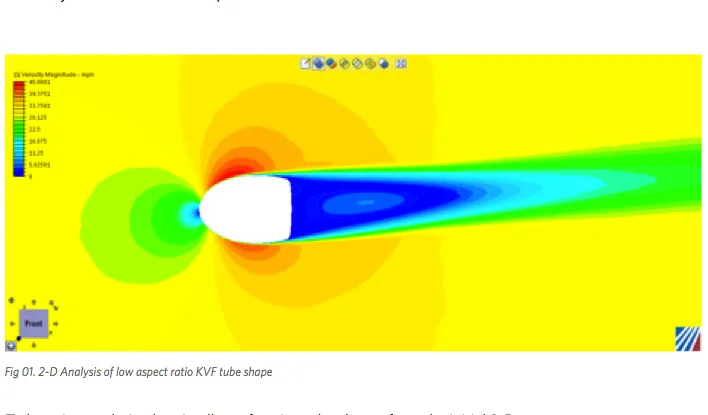
"Weight weenies should be Crr weenies"
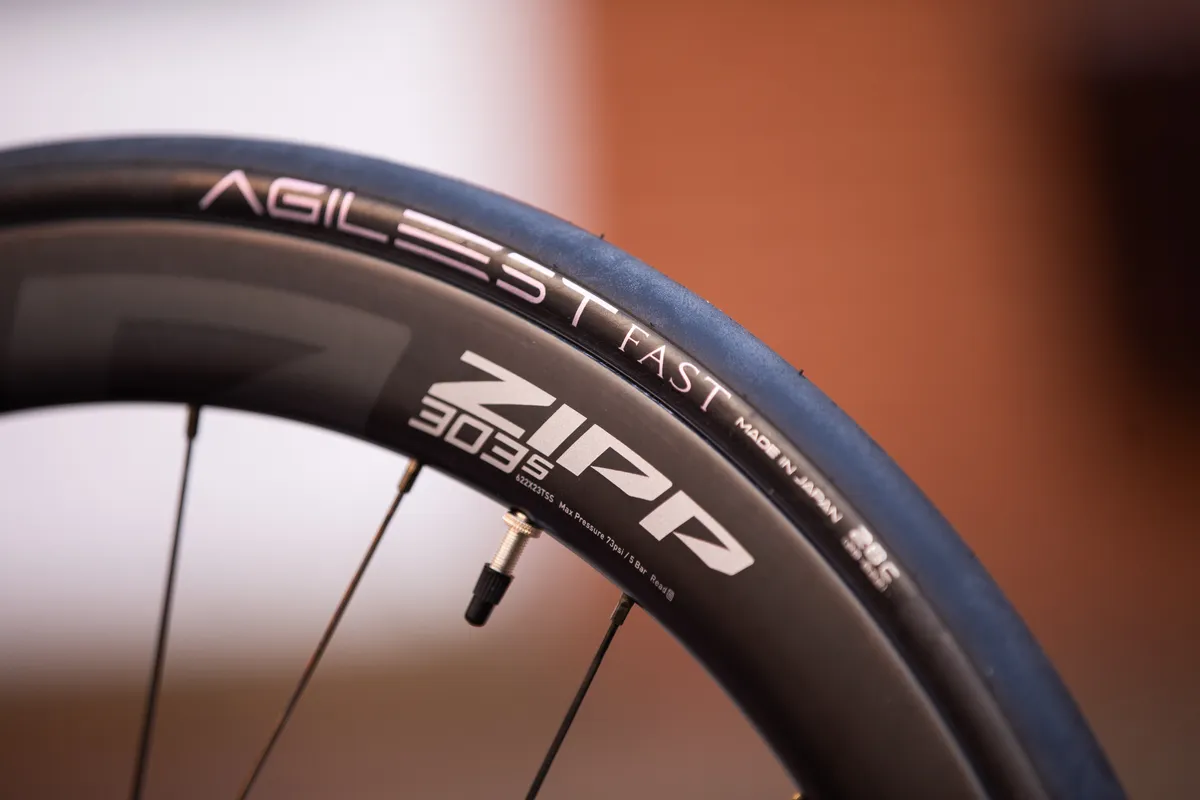
So said Robert Chung, Professor and Theoretical Mathematical Demographer at the University of California-Berkeley. Chung is perhaps most famous for devising the ‘Chung Method’ of calculating aerodynamic drag, but he also reminds us of the importance of not ignoring rolling resistance.
Using a power equation for wheeled vehicles (such as the one found at www.kreuzotter.de), he showed that even a relatively small difference in rolling resistance (Crr stands for 'coefficient of rolling resistance') can be worth as much as large changes in weight, even on steep gradients.
Chung's graph plots the difference in Crr between Continental’s GP4000S II and GP5000 tyres in terms of the equivalent efficiency found through weight loss on different gradients.

On a flat road, it’s clear that even a relatively small decrease in rolling resistance is worth more than practically any increase in weight.
What’s really interesting to note though, is that changing from a GP4000 to a GP5000 is still worth more than 500g of extra mass even on a 10 per cent slope.
Yes, that’s right; the small difference in rolling resistance between two of the best road bikes tyres can have a greater effect on your efficiency than 500g of extra weight even on a 10 per cent slope.
That equivalent mass penalty only increases as the gradient gets shallower. On a six per cent slope, the difference is equivalent to a kilogram of extra mass.
The key takeaway is that you shouldn’t just look at weight figures when shopping for tyres. The differences in rolling resistance between tyres will be worth far more to your climbing speed than any minor weight variations.
Gearing and cadence when climbing

Some riders apparently enjoy using singlespeed or even fixed-gear bikes for climbing hills. But most people are going to want bike gears.
For a long time though, back in the days when riders only had five or so cogs on their cassette to choose from, gears such as 42×21 were considered adequate for climbing mountains.
Thankfully, though, things have moved on and we now have access to compact/sub-compact chainsets, long-cage rear derailleurs and much larger bike cassettes.
Used together, these can allow practically anyone to spin up steep climbs at a comfortable cycling cadence, rather than turning them into a series of leg presses.
Muscling up a steep hill in a massive gear might feel heroic, but it’s probably slower and it’s costing you more energy too, as anyone with a power meter will be able to attest to. These days, even the pros know you need to gear down when the road goes up.
Rim or disc brakes
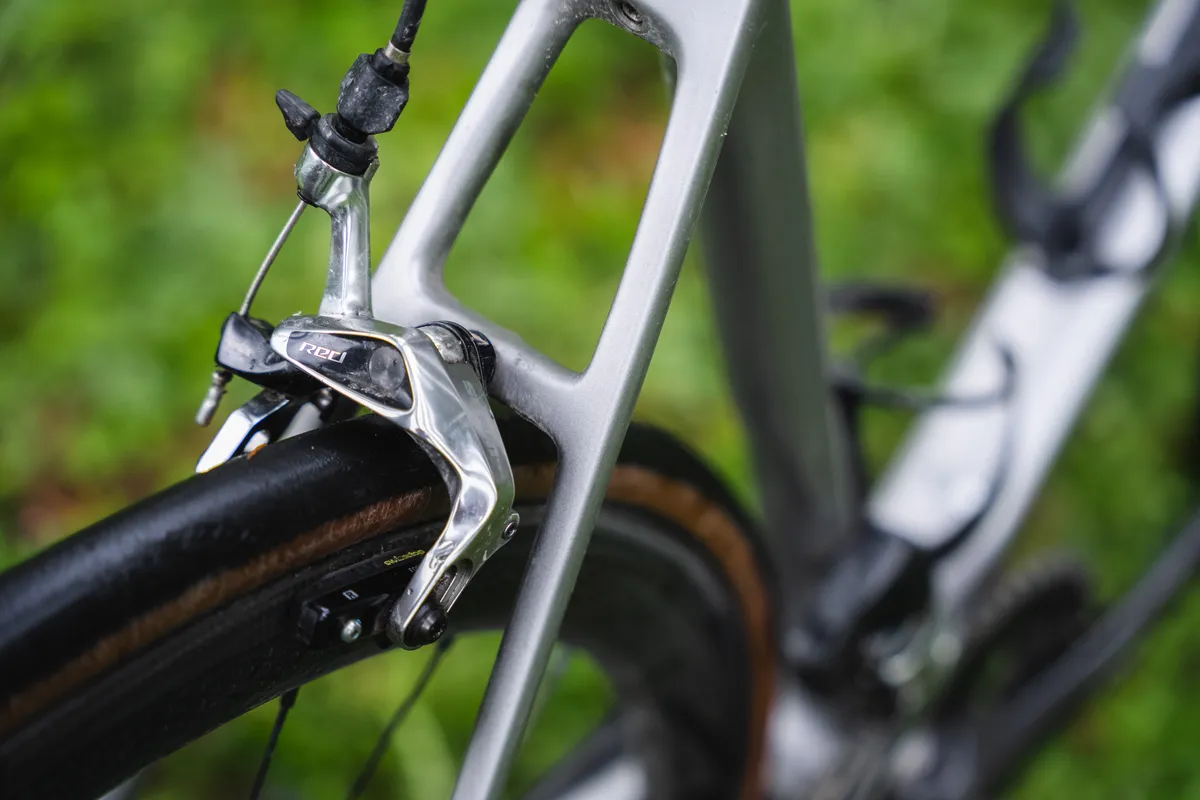
Another thorny issue. In our opinion, there are two answers to the bike brakes debates – a simple one and a nuanced one.
The simple answer is that rim brakes are, generally, lighter, and therefore are better for climbing bikes.
There's a more nuanced answer, however. While disc-brake equipped bikes generally come with a weight penalty (though this is becoming harder to measure because, despite what we wrote in 2017, new high-end rim brake road bikes are uncommon), the advantage of better braking will be keenly felt on the way down the hills.
If the only thing you care about is going uphill as fast as possible, then rim brakes could still be the right choice. Otherwise, the advantages of road disc brakes might tip the balance.
